Album: Colorful Dinosaur Art
Eye of the Riverbed: (Tyrannosaurus)
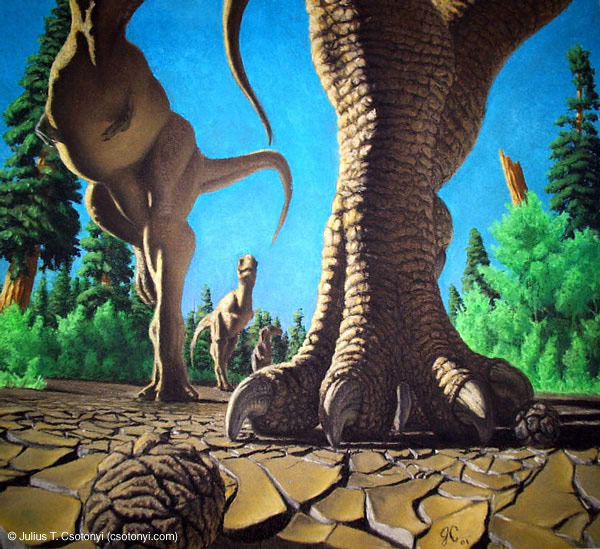
The bipedal Tyrannosaurus rex used its long tail to balance its large head as it roamed in search of prey. Scientists don’t know whether T. rex could run at high speeds or whether its body weight limited it to walking.
Sinosauropteryx prima
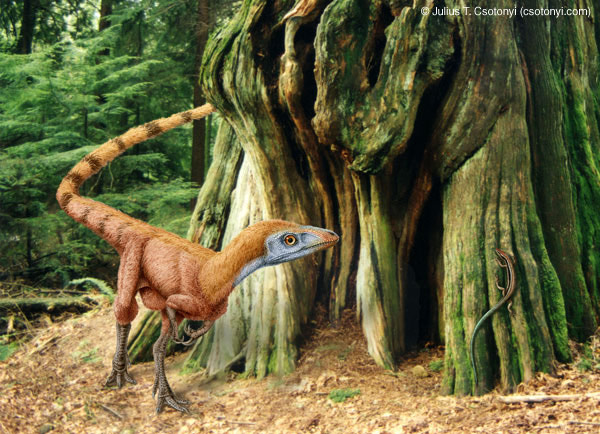
This Sinosauropteryx prima, who lived during the Lower Cretaceous in China, spies its potential lizard meal. This species had an outer covering that resembled "protofeathers".
Dromiceiomimus brevitertius
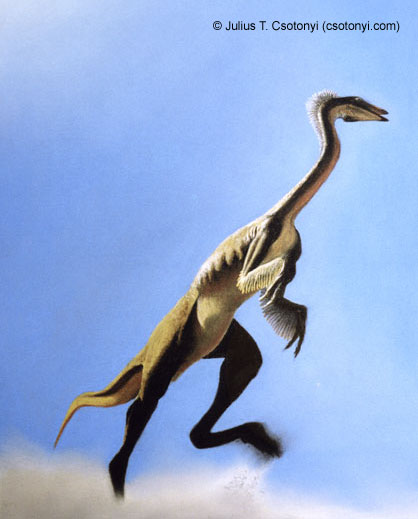
The aptly named Dromiceiomimus, or “emu mimic,” had a long neck and limbs, large eyes, and a toothless, beaked mouth. Found in Canada during the Upper Cretaceous, it would have been difficult prey to catch because it was extremely fast.
Einiosaurus procurvicornis
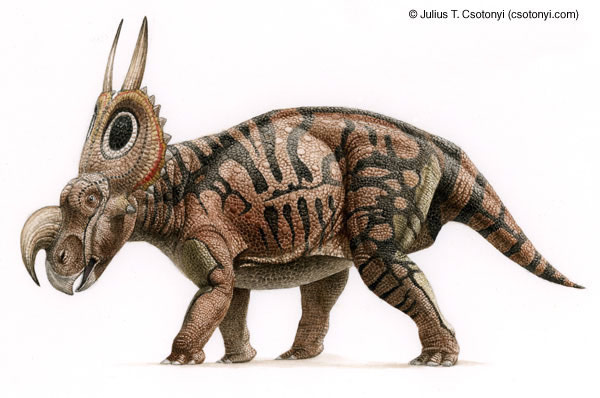
Einiosaurus, an Upper Cretaceous herbivore, is characterized by its strongly forward-pointing nasal horn. Like other ceratopsids, it traveled in herds and had teeth that could chew through even the toughest plants.
Pachycephalosaurus wyomingensis
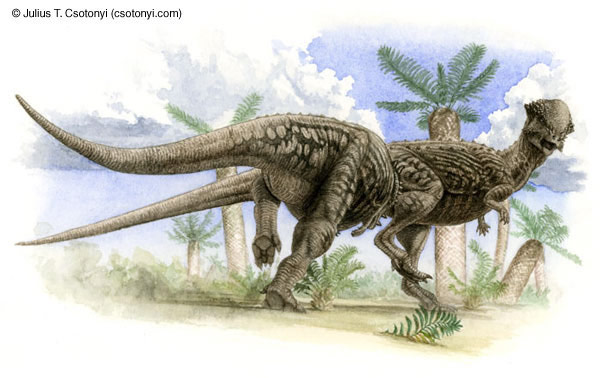
The herbivorous Pachycephalosaurus, or “thick-headed lizard,” had a large, bony dome on top of its head. Scientists are unsure whether the dome might have been used for head-butting or whether any impact would have injured the dinosaur.
Dimorphodon macronyx
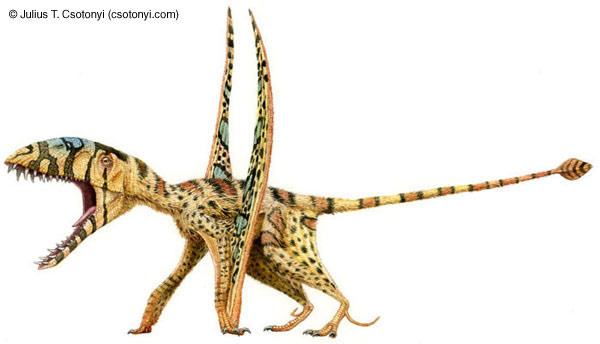
One of the earliest known pterosaurs, or "flying reptiles," Dimorphodon had an approximately 4-foot wingspan and two sets of teeth „ ─ a rare trait in reptiles. It was found in Britain during the Jurassic.
Cretoxyrhina mantel pursuing Clidastes liodontus
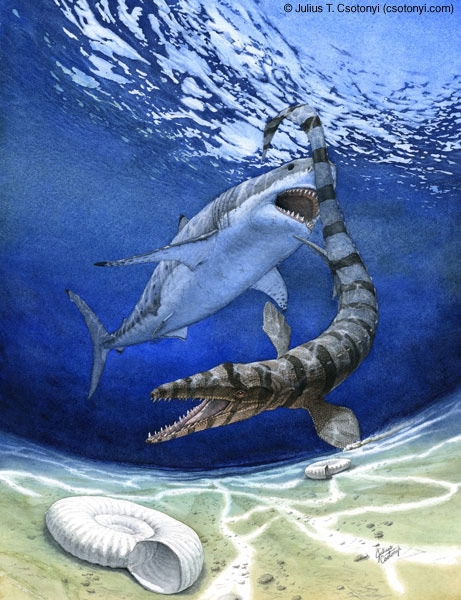
Top sea predator Cretoxyrhina, called the “Jaws of the Cretaceous,” rivaled the modern Great White shark in size. Swimming through the same seas with its undulating body and paddle-like feet, Clidastes reached lengths of 7 to 12 feet, half of which was its tail.
Get the world’s most fascinating discoveries delivered straight to your inbox.
Oviraptor philoceratops
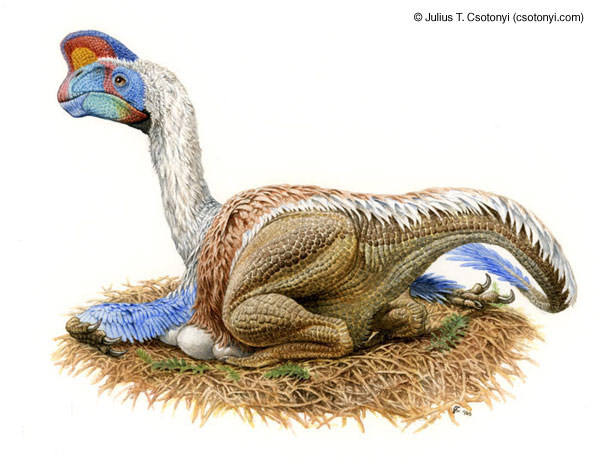
Originally found near what was thought to be another dinosaur’s nest, this small, bird-like dinosaur was named Oviraptor, which means “egg thief.” But the nest actually contained Oviraptor eggs, turning Oviraptor from an egg snatcher into a nurturing parent.
Masiakasaurus knopfleri
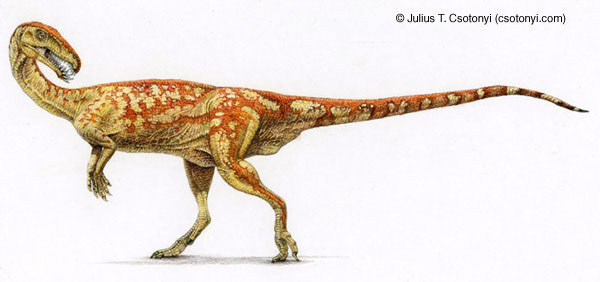
Characterized by its strange teeth that curled outward and forward from its mouth, Masiakasaurus lived in Madagascar during the late Jurassic. The German shepherd-sized dinosaur was named after Dire Straits guitarist Mark Knopfler because the paleontologists who discovered it thought his music was their “lucky charm” for finding fossils.
Mei long
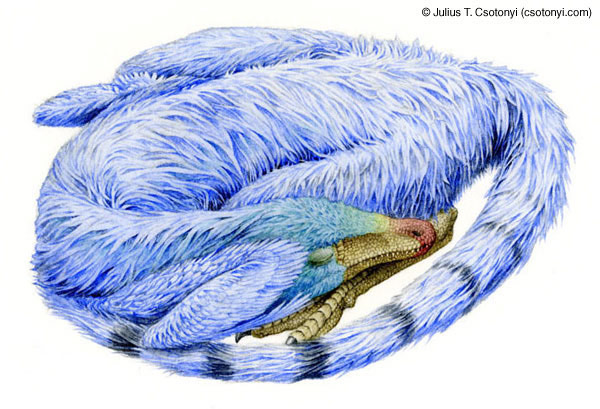
Possibly an ancestor of the first bird, this early Cretaceous dinosaur’s name means “soundly sleeping dragon.” The first fossil of the duck-sized dinosaur was found in what is believed to be a bird-like sleeping posture, providing a rare glimpse of dinosaur behavior.
Diplodocus carnegii
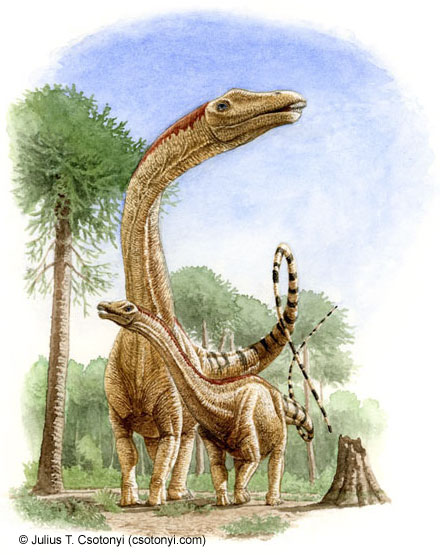
Named after businessman and philanthropist Andrew Carnegie, Diplodocus carnegii, with its long, flexible neck and tail, is one of the longest dinosaurs ever found. Because it had no teeth in the back of its mouth for chewing, scientists think it swallowed stones to help grind up and digest its food.


